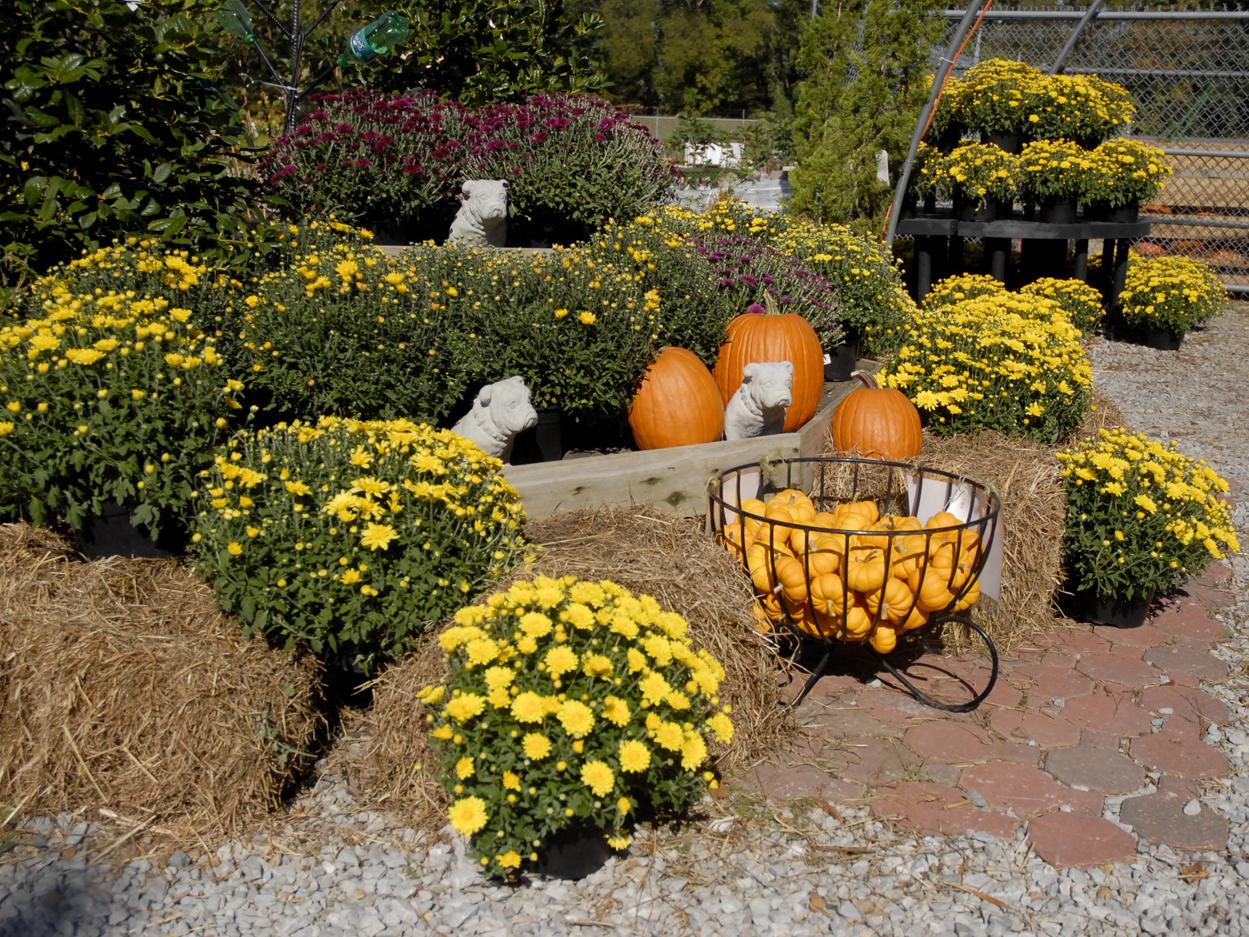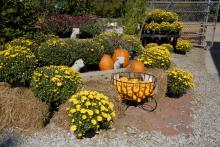Information Possibly Outdated
The information presented on this page was originally released on October 15, 2010. It may not be outdated, but please search our site for more current information. If you plan to quote or reference this information in a publication, please check with the Extension specialist or author before proceeding.
Halloween mystery: Why grow pumpkins?
MISSISSIPPI STATE -- Halloween is surrounded by mystery, and one of the greatest mysteries to Mississippi farmers is why anyone would want to grow pumpkins.
David Nagel, vegetable specialist with Mississippi State University’s Extension Service, said pumpkins are hard to grow in Mississippi because of the late-summer weather, but farmers are eternal optimists.
The state’s pumpkin growers are approaching Halloween with their second consecutive year of horrific growing conditions. In 2009, Mississippi pumpkin fields were swamped by unseasonable, late summer rains that increased disease threats and caused muddy harvest conditions. In 2010, farmers returned to their fields with hopes the rains would not damage the crop a second year, and rain did not.
“Most growers are reporting that the heat and lack of rain reduced their pumpkin size and number. The good news is that fields faced minimal disease pressure,” Nagel said. “Producers had good prices last year because of the yield losses from the rain, and prices should be good again this year because of yield losses from the drought.”
Nagel said pumpkins appeal to farmers because they can provide a source of income in October. However, because of the late-summer conditions when they must be grown, they are one of the hardest vegetable crops to grow in Mississippi.
“If we just wanted to grow pumpkins in Mississippi, we would plant them much earlier to avoid the typical drought conditions in the late summer,” Nagel said. “But if you want to have pumpkins for Halloween and Thanksgiving, they need to be planted around the first of July.”
Reid Nevins of Clay County has been growing pumpkins near Hamilton for three years, mostly as a hobby. He has been trying different varieties to see which ones work best on his land.
“This year, I planted some carving-size varieties that were powdery mildew-resistant. Unfortunately, they weren’t drought-resistant,” he said.
Nevins increased his plantings from about 2.5 acres in 2009 to 6 acres this year. The drought conditions robbed him of half of those acres.
“We only managed to harvest 3 acres. Yields depended on the varieties. Our best carving pumpkins were Gold Medal and the worst were Big Max. The little pumpkins, Baby Boos and Jack Be Little, did very well,” Nevins said. “We sell directly to customers at the farm and to local lawn and garden centers.”
Nevins said pumpkins are an expensive and labor-intensive crop to grow in Mississippi.
“Growers have to spray fungicides on a regular basis, mainly to control powdery mildew. We also have to spray often for insects, such as squash bugs and cucumber beetles,” he said.
Bill Evans, assistant research professor at MSU’s Truck Crops Branch Experiment Station in Crystal Springs, said the university’s pumpkins have had a great year because they have access to water.
“When you have irrigation, dry years are great because diseases are not as problematic,” Evans said. “This year, the pumpkins have had good color. We’ve maintained a preventive fungicide program and scouted for insects. We are looking at excellent yields because of the fertility and irrigation efforts.”
The pumpkin crop at the experiment station will be on display Oct. 15-16 from 9 a.m. to 2 p.m. during the annual Fall Flower and Garden Fest. The grounds are located on Highway 51 south of Crystal Springs, 25 miles south of Jackson. Take exit 68 off Interstate 55 to get there. Admission and parking are free.





